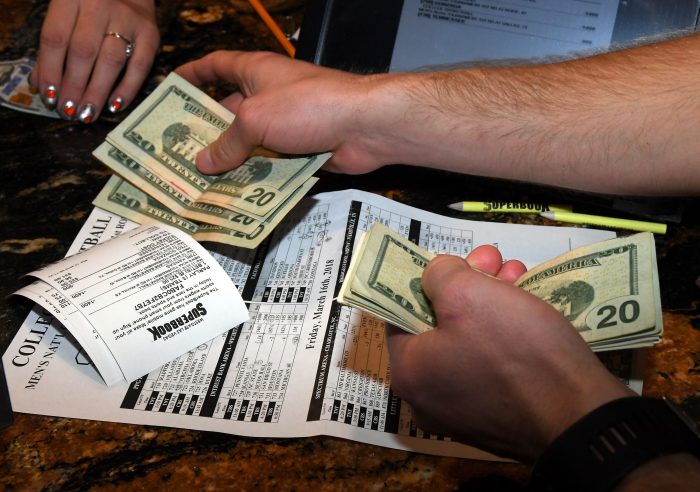
Dispersion is a concept that every sports bettor sooner or later encounters. The term came to us from mathematics and quickly enough fixed in the context of sports betting. Dispersion in its simplest form is a deviation from the mathematical expectation. It is especially great at short distances. Click Here to know a small number of bets traditionally affects such variance.
The distance in sports betting is called the total number of bets made. In order to give a relatively objective assessment and identify certain patterns, it is necessary to make several hundred predictions. Moreover, in order to find out the indices of dispersion, it is necessary to use the financial strategy “flat”. The size of the bet should always be the same as a percentage of the total pot.
Peculiarities Of Dispersion

Dispersion, which is essentially the spread of results from expected outcomes, is one of the most obvious attributes of sports betting. If everything could be explained solely with mathematics, then the meaning, as well as the level of popularity of predictions, would not be so high. Although the variance usually evens out over the long run, in 10-20 bets it can be very noticeable. That is, the longer the series, the less influence it has on the outcome of that very dispersion of results.
…which in a practical sense means the appearance of a higher-earning probability for a player, betting on low dispersion predictions: the lower the dispersion, the higher the predictability. It is important to remember that in professional sports forecasting, stability is more important than “papkozakidatnye” odds and the level of passability.
Such correlations have a direct impact on sports betting. Let’s try to look at variance with a simple coin example. For example, we flip it 10 times. Logically, the number of tosses for each side should be 5-5, but in reality, this is unlikely. Most likely it will be 6-4, 7-3, or something like that. It might even be 10-0, although the odds of that are minimal.
If you increase the number of flips, the situation is very likely to even out. For example, if you flip a coin 100 times, the result might be, for example, 55-45, which as a percentage is no longer that skewed. The point is that “on a scale” such deviations do not look so striking. For example, a variation of 5 outcomes at 100 attempts (1/20), is less sensitive than 1 at 10 (1/10).
If you continue to increase the number of trials further, the variance will decrease in most cases. This doesn’t mean that we’ll get a score of 500-500 per 1,000 tossups, but as a percentage, the gaps aren’t that high. The lower the spread, the closer the player is to the real mathematical expectation.

Such a concept as the variance is inevitably faced by those who consider sports betting as a stable activity and one of the main sources of profit. That is why it must also be taken into account. Adding to the complexity is the fact that in sports, there is always a place for the unexpected. In the language of probability theory – a random outcome. It is impossible to thoroughly predict the results of all confrontations as an experienced forecaster, as well as any other player. It’s mathematics, you can’t argue with it.
Positive variance in more than a hundred forecasts is a sign of a really experienced player who knows how to assess the risks and other costs. If we are talking even about dozens of events, positive values are not always evidence of skill. Often a positive variance over a short distance can be explained by trivial luck.
Why Is Variance So Important?

Dispersion directly affects the player’s income level, so it is impossible to ignore it. It looks especially “insidious” on relatively short distances. The players who have to make forecasts as accurately as possible understand it. One of the main mistakes of beginners is too large an amount of the initial bet. You should never bet more than 2% to 3% of the bank total. Even if the event seems to you “ironclad”, the possibility of losing is always there.
Betting even 10% of the bank amount is a huge and, in most cases, unreasonable risk. Such irrational use of funds dramatically increases the risk of bankruptcy. The example of a coin clearly demonstrates that the probability of winning can be as low as 20%. Now imagine what damage will be done to your budget if not 50% of bets will be played, but the above figure. That’s why you need to be as responsible as possible when making predictions.
At the initial stage, it is better not to make large bets. About 2% of the total bank is ideal. So a player will be protected from serious financial losses at a distance. Dispersion also will not fundamentally affect his financial situation. Also, a rational expenditure of available funds is a guarantee that it will be possible to make a lot of bets and most of them will bring the desired income. In most cases, predictions do go from “quantity to quality”.
A single betting success can often be just a fluke. A true professional is determined by successful play on the distance. The secrets of success are:
- The presence of a strategy
- The ability to quickly respond to all changes
- Correct calculation of mathematical expectations

A positive variance on more than a hundred forecasts is a sign of a really experienced player, who knows how to assess the risks and other costs. If we are talking even about dozens of events, positive values are not always evidence of skill. Often, the positive variance over a short distance can be explained by trivial luck.
Discontinuity. Its indicators may fluctuate even at a distance. And, even if we are talking about hundreds of events, failure may pursue the player in dozens of consecutive bets.
Unpredictability. If fans knew when a losing streak would occur, they would surely reassure themselves. Predicting it, however, is unrealistic. Today we win several times in a row, and then a bad streak follows. In this case, the player’s strategy or the algorithm for selecting events remains the same. Of course, this situation often frustrates ordinary players. Who wants to steadily increase their assets, and then lose all the money in a couple of days. The main thing in such a situation – do not take a risk and do not go all-in. This is a traditional mistake of many newcomers in the world of betting.
The difference in financial strokes. No one is immune from the fluctuations of the bank.
The most important thing, faced with serious financial fluctuations, do not to worry and treat the situation rationally. And it concerns not only losses but also positive results. Often even a big win is just a concurrence of circumstances, which is understood by more experienced users who have been engaged in making forecasts for several years.
The main thing is not to make “sudden moves”. A radical change in tactics, an attempt to go all-in, will almost always mean failure. Such risks are totally unfounded and can lead to a player’s ultimate financial ruin in most cases.
As stated earlier, variance and expectation can even out over time. However, this is likely to require hundreds of bets, and the odds in them should be approximately the same. The level of quotations demonstrates directly the mathematical expectation.
The Long-term Effect Of The Variance

The classic rule that dispersion evensens everything out is always true. However, even a hundred successful bets do not mean that you can win consistently thanks to your knowledge of sports. Black bars can happen to anyone because consistently predicting outcomes is a real art.
Positive variance is proof that the forecaster understands sports and can not only predict the outcomes periodically but also take into account the trends, patterns, correlations. For most people, this will be a key factor in obtaining a stable income even over a distance. There is nothing difficult about it now because it has become really easy to calculate the mathematical expectation.
In the long run, the variance shows whether or not you should be betting on sports in general. However, even dozens of oppositions won’t give you the real picture. Professional gamblers often reject events with too low odds or, on the contrary, with suspiciously high ones. The fact is that it is difficult enough to stably calculate a profit, taking into account such confrontations. One-time victories may occur, but they will not allow you to count on a positive result.
In Miller’s book, where dispersion in the context of sports betting is analyzed in detail, the author advises not to take excessive risks and always sensibly assess the situation. It is this will be the key to a stable profit, even at a distance. Dispersion is particularly evident in the beginning, in the first 10-20 bets. Even if the income level is lower than that demonstrated by mathematical expectation, do not get upset and immediately take drastic measures. In most cases, the situation will even out in the near future.

Thus, dispersion is a crucial concept in the context of sports betting. Professional gamblers always evaluate their results in the long term. If the outcome is positive, it once again proves their skill. Manage your available funds rationally, which is the key to a steady profit.
As you can see, not everything in the forecasts depends solely on mathematics, because there is always room for a sensation or a series of patterns. This is typical not only for sports betting but also:
- coin flipping
- roulette (red and black)
- other games in the casino
It is important to understand that it is simply possible to win on sports betting all the time. This is the main property of professional netting (and not the level of income, as many people mistakenly think). Both winning streaks and outright failures should be handled calmly and professionally and not taken too personally. In most cases, especially if we are talking about long-distance, the situation will stabilize and approach the mathematical expectation, which should also calculate every experienced player.
Source: here.








